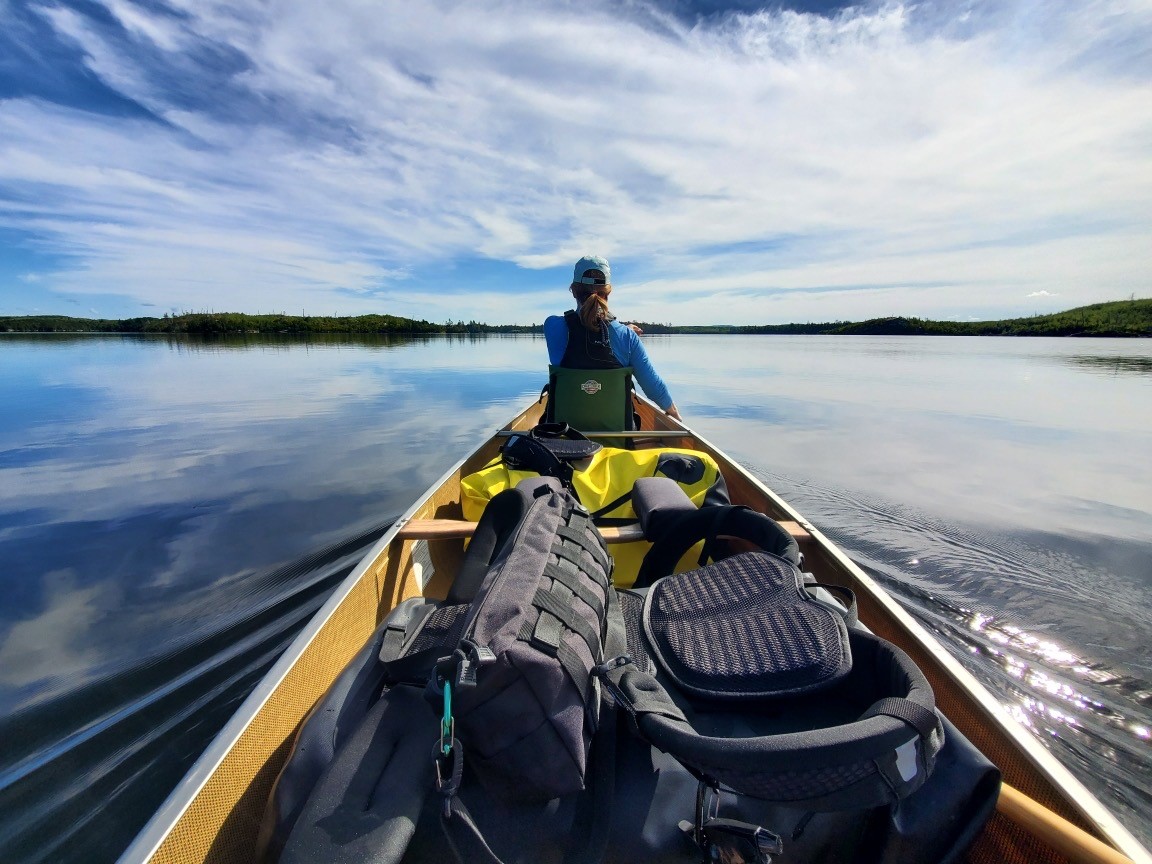Editorial
Location, Location, Location!
I’m writing this editorial from the Boundary Waters Canoe Area (BWCA) in Minnesota, where I am a two-day paddle from civilization. Out here, where there’s no shortage of pine tree–studded islands and rocky outcroppings, a map and the direction of the sun alone only gets you so far. Knowing how to use a compass is an essential skill, one that can keep you from getting lost—or at least get you un-lost if you find yourself confused as to where you are. This knowledge and skill can save hours lost to wrong turns and backtracking.
This is my sixth trip since 2013 and I’ve always travelled with experienced outdoors-people: people who I have relied on for navigation and other expertise. I’m pretty darn good at pitching a tent and making a camp meal, and you can count on me as your canoeing partner, but that’s about the extent of my expertise. On this trip, though, I’ve decided to level-up my wilderness skills and finally learn for myself how to use a map and compass to tell me where I am and how to get where I’m going.
Like many of you, I’m sure, I’ve been taught how to use a compass before, more than once. But that information I learned in a classroom never stuck with me past the test—probably because I never had the chance to use it in context. On this wilderness trip, I am tasked with pointing us in the direction of our next portage or campsite. And, for the first time when learning about maps and compasses, this knowledge has real value for me.
This on-location learning experience has me thinking about what’s next. For my next BWCA trip, I’d like to learn how to recognize the different types of clouds and what they can tell you about upcoming weather. I’ve also studied this many years ago in school as part of a curriculum unit—something to know for a test, absent of opportunity to apply. And guess what? I don’t remember anything more than a few cloud names—cumulonimbus and cirrus—and I couldn’t tell you what each type looks like or what type of weather they foretell. Out here in the BWCA, though, being able to read clouds to predict short-term weather can make the difference between being cold and wet or warm and dry. And I’ve been cold and wet before, which makes me quite motivated to be better prepared in the future!
This is the power of place. Learning new skills and knowledge in contexts where you would actually use them or where the knowledge holds real value. This month’s issue about place-based learning explores just this. What better way to learn about the natural world than actually being in nature while you are doing it? In CSL over the next two months you’ll find articles about learning experiences situated in real places: learning about seaweed and native plants in coastal areas as well as environmental monitoring in national parks. Of course it isn’t always feasible to conduct learning experiences on location, but think of the difference it could make if we did it more often.
Beth Murphy, PhD (bmurphy@nsta.org), is field editor for Connected Science Learning and an independent STEM education consultant with expertise in fostering collaboration between organizations and schools, providing professional learning experiences for educators, and implementing program evaluation that supports practitioners to do their best work.
citation: Murphy, B. 2022. Location, location, location. Connected Science Learning 4 (5).
Environmental Science STEM Informal Education



